Text
Ready-to-wear sustainability

PHOTO VIA @/kaileemckenzie ON INSTAGRAM
With Gucci CEO Marco Bizzarri’s recent announcement of the house’s commitment to becoming a more sustainable brand, it has started a conversation amongst those in the fashion industry, as well as amongst fashion enthusiasts: just how much does the industry contribute to pollution in the environment, and what can be done to improve it?
According to The United Nations Economic Commission for Europe (UNECE), the fashion industry is responsible for 10% of the world’s carbon emissions. In addition to carbon emissions, 20% of global wastewater is produced by the industry.
While these figures can be alarming, many brands and designers have already begun the process of changing their practices and becoming more conscious of their production and supply chain.
Brands like The North Face and Patagonia have sustainability as one of their core values, consistently releasing garments and accessories made from recycled and upcycled materials. Patagonia even closed down their stores and website for a period of time during the September climate strikes and encouraged employees to take paid time off in order to participate in protests.
“For decades, many corporations have single-mindedly pursued profits at the expense of everything else—employees, communities and the air, land and water we all share,” Patagonia CEO Rose Marcario wrote in a blog post.
On Nov. 13, Patagonia announced that they are starting a new program called ReCrafted that makes garments and accessories from pieces of clothing that are usually considered unrepairable and would end up in a landfill otherwise.
French designer Marine Serre has been vocal about sustainability since she became active in the industry with her own work in 2016, and it shows in her collections thus far. Serre has an eco-futurist line that is made from materials exclusively from end-of-cycle product.
While luxury and high-end brands have made the pledge to be more environmentally friendly, fashion enthusiasts and the environmentally-conscious alike now look to the other end of the fashion industry: fast fashion.
As big brands and designers begin to step up and commit to reducing the impact that the industry has on the environment, it’s also up to the consumers to step up and do their part as well.
0 notes
Text
Here’s how the fashion industry is taking steps towards sustainability
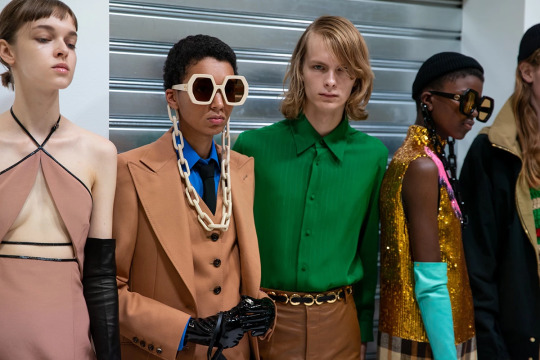
PHOTO VIA HIGHSNOBIETY / EVA AL DESNUDO
Gucci CEO Marco Bizzari urges companies to step up and fight against climate change in a post on the brand’s Instagram page.
Most of the comments under the post are positive, expressing their approval and support for this call to action, praising Bizzari for not only taking on the issue, but taking it seriously.
However, some comments are less than supportive.
“Gucci, please focus on clothes and stay out of politics,” one Instagram user said.
Some commenters argue back that climate change is not just an item on a political agenda, but a real issue that affects everyone.
Bazzari calls for immediate action, and for CEOs to hold themselves and their companies accountable for the total greenhouse gas (GHG) emissions that are generated by them.
“We don’t have the leisure to just work to avoid and reduce our impacts on climate and biodiversity over the long-term,” Bizzarri said.
Many other brands such as Patagonia and The North Face have had long histories of having sustainability initiatives. In particular, Patagonia is a brand that is well known for its commitment to fighting climate change and reducing waste, and is ranked as one of the world’s most transparent brands when it comes to the way their garments are produced.
One of Patagonia’s most recent releases, the Black Hole Bag range, was produced by recycling 10 million plastic bottles.
This is just one of many examples in which the brand has up-cycled materials to create their garments and accessories, steps towards their goal of using 100 percent renewable and recyclable materials.
Other brands on the luxury end of the fashion spectrum have also taken steps towards sustainability.
Marine Serre has always been vocal about her support of brands and companies moving towards being more environmentallt conscious, and it shows in the way that 50 percent of her brand’s Spring/Summer 2019 collection was made with up-cycled materials.
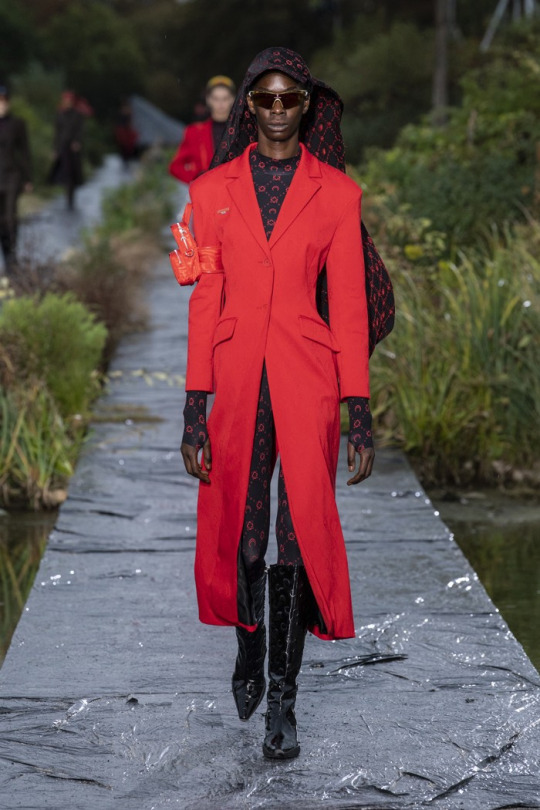
PHOTO VIA HYPEBEAST / ETIENNE TORDOIR
Brands that have pledged that they and and their companies will be committing to fighting climate change have announced that they will be rolling out plans as soon as possible.
It’ll be interesting to see which brands will take steps towards sustainability, as well as how they will work to reduce their GHG emmissions, as well as how they wll work to improve and fight biodiversity loss.
0 notes
Text
Style influences and the conflicting aesthetics
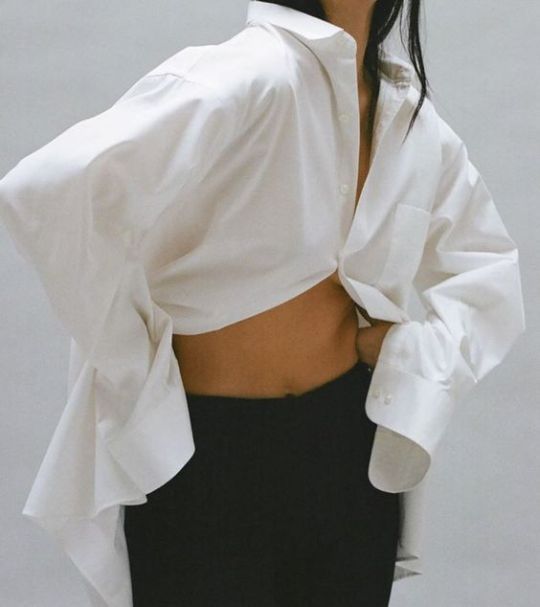
Over the years my style has evolved and changed, influenced by the change in my interests, the music I listened to, and the media I consumed. However, in the past couple years since I started college, my own personal style has finally become more consistent. And yet, there are some aesthetics that I gravitate towards that conflict with that style that I thought I had settled on.
While I occasionally do stray from what I define as my “style”, I always come back to it.
I’ll have to be honest and say that because of the people I had been following on social media at the time, as well as the types of style and fashion YouTube creators I kept up with, I was heavily influenced by all of them until I began to take that inspiration I pulled from them and made it my own as time went on.
One person that heavily inspired me was Kailee Mckenzie, a YouTube creator and fashion influencer on Instagram. I was fascinated by how her style seemed to be so simple, yet luxurious, heavily based on good quality basics mixed with more interesting statement pieces. She is actually the reason I started to wear trousers and dress pants instead of my usual black super skinny jeans that had been characteristic of my style prior.

Via @/kaileemckenzie on Instagram
Because of her, my wardrobe has become very heavily based on well-made basics that are meant to last. I also have reduced my fast fashion spending, however eradicating it has been difficult.
Stemming from my inspiration from Kailee Mckenzie was my newfound interest in vintage fashion, as well as the functionality of workwear and especially workwear from the 90s, as well as the anti-fashion and decontructionist movement from that same time period.
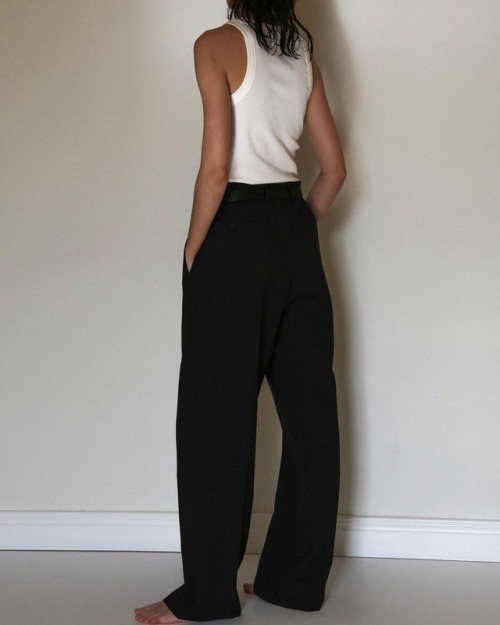
Via @/lastboyalive on Tumblr
Another huge influence on my style has been Brenda Weischer, most well known as brendahashtag on Instagram. I think she is one of the influencers that I’ve followed for the longest, since I began my Instagram account in the beginning of high school. I’ve been following her since I was 14 or 15, and that’s a long time, seeing as I’m 21 now.
What’s also interesting to know is that I think we both went through sort of the same style evolution. Back when I first followed her, it was for this distinct kind of style and aesthetic that she had, mixed with a style that was very popular amongst those who used Tumblr around 2014-2016. Some might call it the “pale grunge” style, characterized by the iconic American Apparel basics and Doc Martens, mized with high end, luxury streetwear. As time went on, she began to get more into vintage fashion as well. Her style has heavily influenced me as well.

Via @/brendahashtag on Instagram
Despite the fact that I’ve settled on my own personal style now, I do find myself once in a while gravitating towards a style that is characteristic of the 2000s and late 90s. This tends to come when I’m feeling particularly lazy and don’t really feel like dressing up and want to be more comfortable, or if I’m going to be in a casual setting.
I think straying from what I think is my personal style now is good for continous self-discovery, at least when it comes to fashion. I think it’s important to change it up sometimes, or to experiment in order to keep things interesting.
It’ll be interesting to see where my style goes and how it changes over time as time goes on and as I get older, and the media and content that I consume changes.
4 notes
·
View notes
Text
Keeping entertained in quarantine

In the past few years, I have watched little to no TV, and instead have turned to YouTube, with its plentiful options for what to watch. From cooking videos, to makeup tutorials and vlogs, the possibilties are endless.
Here are my top five favorite fashion YouTube creators watch during this quarantine so far.
Kailee Mckenzie

Kailee Mckenzie is a fashion Youtube creator and influencer based in New York City. Her videos can range in topic from long-term pickups hauls, weekly vlogs, Q-and-A videos, as well as videos documenting her vegan diet.
Her style looks more towards functional workwear and high end vintage, sporting brands like Maison Margiela, Dirk Bikkembergs, and Issey Miyake.
Mckenzie is also a co-owner of Staatsballett, a sustainable clothing brand that is also co-owned by fellow Youtube creator Avery Ginsberg. Personally, I have bought a few pieces from the brand, and they’re easily some of my favorite items of clothing.
What makes Mckenzie one of my favorite creators, aside from her amazing style that is similar to my own tastes and style, is how genuine and kind she is, as well as her relaxing voice.
Sangiev

Sangiev is a fashion YouTube creator based in the United Kingdom. He is well known for his extensive boot collection, and has several videos showcasing the shoes and tips on how to style them.
Sangiev has a style that veers more into high end fashion, sporting brands like Haider Ackermann, Rick Owens, and Prada.
His videos are highly enteraining, as he has a funny personality and makes a lot of jokes about his own style and different elements of the fashion industry. He also engage with his audience a lot, replying to comments and joking around with his audience.
Personally, I like how easy-going he is, as well as how ecclectic his style is, as well as how he manages to mix so many different styles together and manage to pull them off.
Magnus Ronning

Magnus Ronning is a Dutch fashion YouTube creator based in London. His earlier videos were more fashion commentary-based, before he began experimenting with showing different kinds of content, such as hauls, scripted ironic videos on different fashion brands, and other different videos.
For awhile, he was known for rating his followers’ outfits from submissions that they would send him through Instagram.
In the past year, Ronning made the announcement that he would no longer be solely focusing on fashion on his channel, and would be uploading vlog-style videos instead, showcasing himself working on his clothing brand called Ronning.
I think what drew me in the beginning were his outfit rating videos and I have just been along for whatever he decided to upload ever sine. Ronning has a funny, charming personality that his audience appreciates. He is very active when it comes to engaging with his audience and replying to comments and making jokes with them.
Ken Iijima

Ken Iijima is a fashion Youtube creator based in Japan. He is also the owner of the clothing brand called Vuja De Studios.
Iijima’s videos are mostly vlogs with random Q-and-A sessions thrown in, along with the occasional haul segment. His videos mostly show him exploring Tokyo and him showing his viewers the best spots to shop for high end and vintage fashion in the city. A few of his videos also show him working on his brand, from sourcing fabric, to the designing process, to the manufacturing process.
Personally, I like to watch his videos because of his straight-faced kind of sense of humor, and his straightforwardness about fashion and the industry. His perspective on fashion and where the industry is going is very interesting and I respect him a lot as a creative.
0 notes
Text
Store closures and what it means for retail
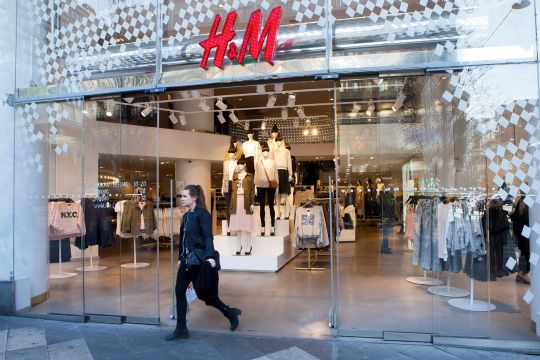
Getty Images
In the face of pandemic, it’s a given that clothing stores and other non-essential retail stores would not be operational at a time like this. Without in-person traffic, here’s what it means for the companies behind these stores
Personally, I work at H&M as a sales associate— or I did.
In early March, my mall sent out a newsletter to the managers of all the stores in the mall that I work in announcing that one mall employee from an unnamed store had tested positive for COVID-19 and that the mall would be closing that day at 7 p.m. until further notice.
I was told that the mall would be reopening on April 3rd, and to expect to be back at work by then, given there weren’t any changes or worsening in spread.
Obviously as time went on and the spread of the disease became rapid and more severe, it was clear that the mall reopening would not be the case.
As of March 31, I have been furloughed, and was told that I can apply for unemployment.
I imagine that my situation is not uncommon and that most retail store workers have either been furloughed as I have been, or have been laid off altogether.
Last week, it was said that Sephora laid off more than 3,000 part-time workers over a brief conference call. Many took to social media to express their frustrations and distress over abruptly losing their jobs the way they did.
Despite the retail store closures, it seems that their online counterparts are trying to make up for the lack of in person sales by pushing customers to order and buy online.
Every day I receive emails from companies like PacSun, Forever 21, and even my own company, H&M, announcing their spring sales, offers for free shipping and other discounts.
Despite the offers for free shipping and the inundation of sales announcements, there are also banners on all the websites with a disclaimer about how shipping will be delayed because of the coronavirus.
Some companies like Brandy Melville have stopped taking orders altogether, as well have prevented access to their websites. Instead, customers are greeted with a message from the company.

screenshot via Korin Chao
It’ll be interesting to see whether other companies will continue to take orders and send out merchandise for customers, or if they’ll stop operations like Brandy Melville has.
0 notes
Text
Antifashion
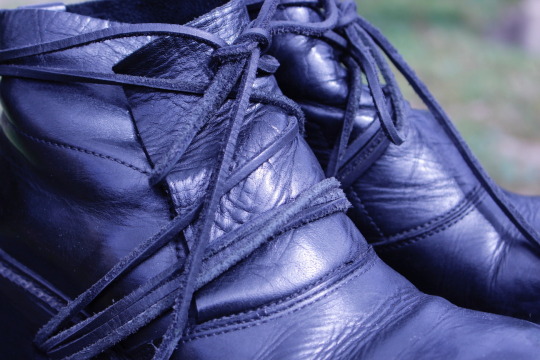
Fashion in the late 80s, into the 90s took a turn from the opulence and extravagence of the decade, to a more “deconstructionist” silhouette and design. No more were the vibrant colors and gold embellishments, the influences from pop culture.
It was time for the movement of antifashion.
Some of the leading designers in this era were Yohji Yamamoto, Rei Kawakubo, Maison Martin Margiela, and Ann Demeulemeester amongst many others.
When the first few collections began to be released showcasing more minimalist designs, raw hems, unfinished details and oversized, baggy silhouettes, fashion enthusiasts all around weren’t sure how to feel.
However, one commonality was clear: shock.
“We simply couldn’t conceive that fashion could turn into something like that,” said one fashion show attendee.
Fashion enthusiasts were unaccustomed to the way the garments had an unfinished look to them, the way the fabrics and materials had holes and tears, the way they hung on the body. Even the way that models walked in these shows, described as robotic, was different from what people were used to seeing.
This movement was titled “antifashion” because of the rejection of glamour and trends.
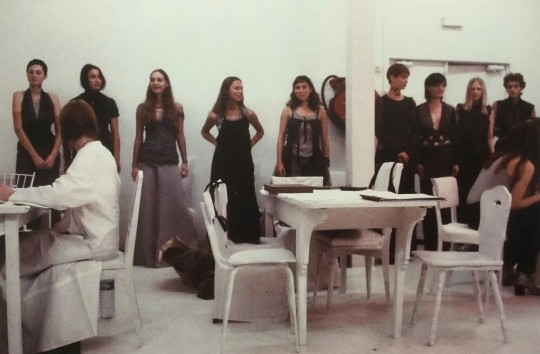
(Maison Martin Margiela S/S 1994 | Anders Edström)
Even the way that the stores were set up for these designers were different from the norm.
These antifashion boutiques commonly had concrete interiors that were minimally decorated, the garments hanging with a uniform space between each hanger. While this may be ubiquitous now, it wasn’t the case for that time.

(Comme des Garçons Store in NY, 1984 | Eileen Gray)
One of the common critques at the time was how the clothes could look so unfinished, so unpolished, yet could cost so much. Some fashion enthusiasts argue that this critique was part of the reason that the grunge fashion movement came around.
Even today, many of these same designers have stuck with the deconstructionist fashion ideals, their current collections featuring garments that are evolved from the styles put out during that era of the late 80s and 90s.
It’ll be interesting to see where else this era’s designs and silhouettes make an appearance in fashion as time goes on.
(Quotes from Antifashion documentary.)
4 notes
·
View notes